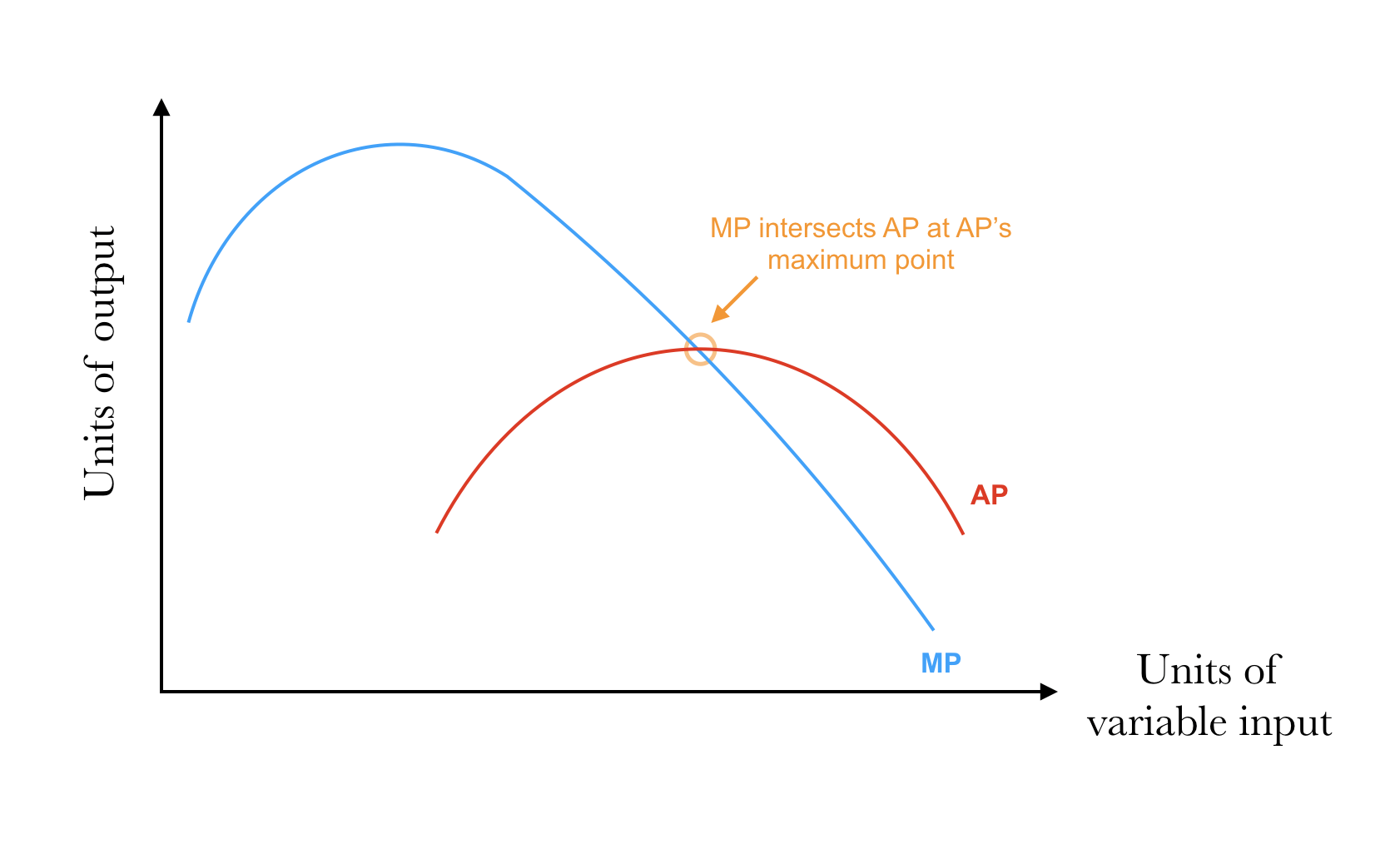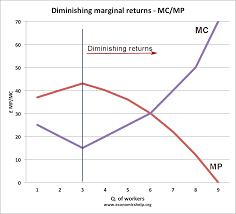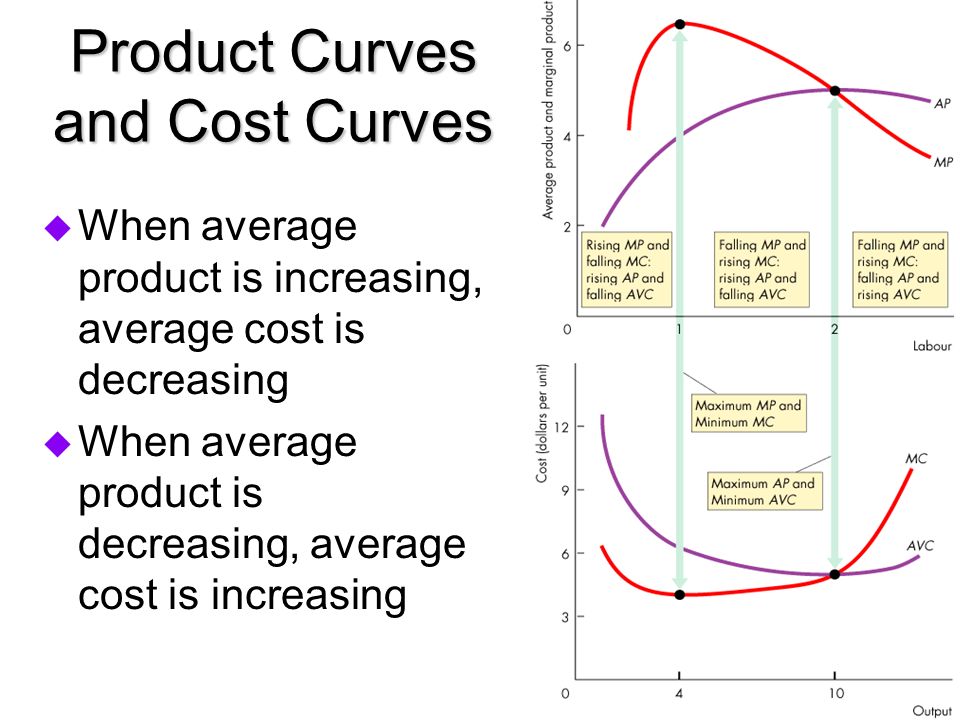Short Run Production/Costs
1/13
There's no tags or description
Looks like no tags are added yet.
Name | Mastery | Learn | Test | Matching | Spaced |
|---|
No study sessions yet.
14 Terms
Total Product (TP)
Output made with a specific number of workers, e.g., 5 workers make 10 clocks.
Marginal Product (MP)
Extra output obtained from adding one additional resource.
Average Product (AP)
Labor productivity calculated as Total Revenue (TR) divided by Units of Labor.
Law of Diminishing Marginal Returns
As more workers are added, at some point the Marginal Product will start to decline.

When MP > AP, what happens to AP?
When MP < AP, what happens to AP?
What occurs at the intersection of MP and AP?
AP is rising
AP is falling
AP is at its maximum.
Fixed Costs (FC)
Costs that remain unchanged when quantity (Q) changes.
Variable Costs (VC)
Costs that change when quantity (Q) changes.
Total Costs (TC) formula
Total Costs (TC) equals Fixed Costs (FC) plus Variable Costs (VC).
(AVC)Average Variable Costs formula
VC/Q
(ATC)Average Total Costs
TC/Q OR AFC + AVC
(AFC)Average Fixed Costs
FC/Q
(MC)Marginal Cost
∆TC(change in TC)/∆Q(change in Q)

As MP increases what happens to MC?
AS MP decreases what happens to MC?
MC is minimized when?
MC decreases as MP increases
MC increases as MP decreases
MC is minimum when MP is maximum

As AP increases what happems to AVC?
As AP decreases what happens to AVC?
When AP is maximized what happens to AVC?
AVC decreases as AP increases
AVC increases as AP decreases
AVC is minimized when AP is maximized